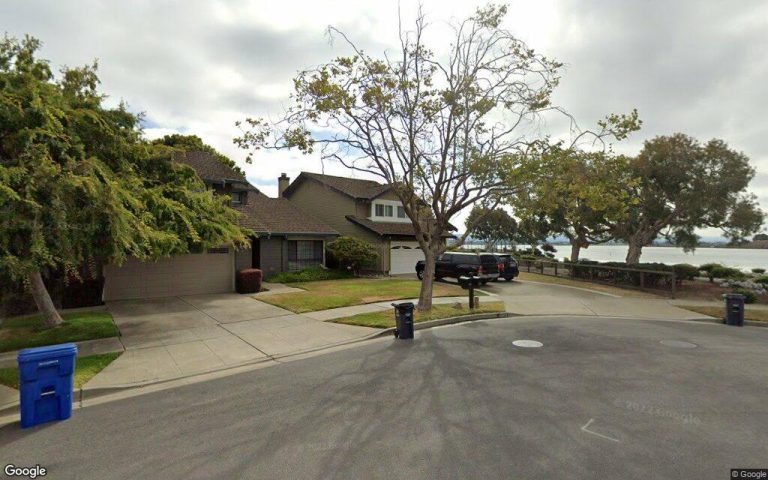When Daniel Costa left prison a decade ago, he may have regained his freedom, but his new housing arrangements made it difficult to escape the life he led on the inside.
For years after his release, a county parole program placed Costa in a series of unregulated and unsupervised group homes scattered across San Jose. The food was bad, parolees found themselves crammed into closet-sized rooms and the lack of an on-site monitor left residents in constant fear “of people taking what’s yours,” Costa said.
“These homes would inevitably not change my mentality of being institutionalized,” Costa said.
Santa Clara County officials believe there are at least a hundred privately owned and operated independent living homes tucked in residential neighborhoods throughout San Jose and the county. Many more are spread across the Bay Area and the rest of California, but no one knows the exact number. They typically house formally incarcerated people as well as those leaving mental health and addiction facilities.
Counties routinely rely on such facilities to house the most vulnerable, but operators are not required to obtain a license — meaning there’s almost no oversight of most homes, even though they often receive public funding to cover residents’ rents. Disability rights advocates and local officials say that’s left many tenants languishing in inhospitable conditions and, in some cases, unable to get the care they need.
“There are folks who are living in absolute squalor,” said Ronda Brown, a behavioral health professional hired by the county in 2022 to lead a review of independent living homes and contribute to a potential oversight strategy at a public meeting.
“If you want a quality home, you’re not going to get it if there’s no one checking,” she told county officials at the March meeting.
A list of code enforcement violations at an independent living home in San Jose.
According to public records, at least 20 properties the county believes are independent living homes are under investigation for code violations. The records describe reports of mold and roach infestations, overcrowded bedrooms, unpermitted and unsafe construction, drug use, exposed wiring, and, in one instance, bodily fluids that had not been cleaned a month after a resident died.
Code enforcement complaints for an independent living home in San Jose.
Visits to two homes in San Jose and interviews with five current and former residents revealed similar complaints, including mold, pests and unauthorized construction. Officials in San Jose, where most such homes are located in the county, said some neighbors are exasperated by frequent drug use and police activity.
Part of the reason for the lack of regulation is to limit bureaucracy, allowing independent living homes to accept people quickly and at a lower cost, though it varies widely, than publicly funded supportive housing. Behavioral health experts say the homes are a key option in places with a severe shortage of affordable housing like San Jose and can help keep people from falling into homelessness.
But unlike residential care facilities, which the state must license, independent living homes — sometimes run by individual operators with limited health care experience — are not obligated to offer support services, including mental health care, or even reminders to residents to take their medication.
Those responsibilities generally rest with residents’ caseworkers, who can be overwhelmed with clients and may struggle to visit homes on a regular basis, advocates said. Caseworkers are often employed by the county or county-contracted nonprofits and refer people to the homes through a loose network of contacts.
State officials with the Department of Social Services did not directly answer a question about whether they have a sense of how many unlicensed independent homes are operating statewide. When asked why the state has chosen not to license independent living homes, the department said it licenses facilities such as residential care facilities for the elderly “in accordance with state law.”
At the urging of advocates, Santa Clara County agreed earlier this year to set aside $2 million to help independent living operators fix up their properties. In exchange, officials and operators would agree to meet specific habitability standards and potentially allow regular inspections. The county does not yet have a timeline for finalizing the new program, officials said.
But starting next year, the county plans to begin inspecting every independent living home where residents receive county rental assistance. Officials are still determining how many homes that would include. They could not say how much rental aid the county sends to such homes. However, the county noted it also has direct contracts to place people in at least 10 unlicensed independent living homes.
Susan Ellenberg, president of the Santa Clara County Board of Supervisors, said the county should prioritize working “to entice more landlords” into oversight by offering money for upgrades and expanding the number of contracts it has directly with operators.
But even taking into account all those efforts, it remains unclear how many homes might still fall through the cracks. Advocates are pushing for a plan that ensures all independent living homes are accountable to county officials.
“Don’t just focus on the ones that are contracted or receive rental assistance,” said Lorraine Zeller, a member of a working group advising the county on how best to spend the $2 million. “You need to keep an eye on all of them.”
One operator, Nelson Muan, said he opened an independent living home in a leafy neighborhood north of downtown San Jose a few years after moving from the Philippines in 2006. His school-aged children had recently followed him to the United States, and Muan, who had worked at a licensed residential care home, decided to rent the home for his family while also subleasing rooms to tenants leaving mental health facilities.
“I was not qualified to buy a house, and I had to raise my kids, so I had to do my best with the situation,” he said.
Muan typically charges around $700 a month for a room and regular meals, he said, and nonprofits contracted by the county refer people to the home. He said the rent money comes primarily from tenants’ social security or disability payments, maintaining he hardly turns a profit. His children are now adults and have moved out.
Muan eventually opened more homes at rented properties around San Jose. At one point, Muan said he had as many as 25 people living in a half-dozen homes. But residents were “unruly” and damaged the properties, including igniting a fire at one home, and some stopped paying rent during the COVID-19 eviction moratoriums, he said. Muan said the constant troubles forced him to close all but his original home.
Court records show Nelson Muan has been evicted from at least four properties in Santa Clara County
According to court records, Muan has been evicted from four properties that appear to have been used as independent living homes since 2017. It’s unclear what happened to the residents.
Muan’s original property is now the subject of an eviction lawsuit and a recently opened code enforcement case. One resident and an advocate who visited the property described mold and pest infestations and people living in unsanitary conditions in the basement.
Muan blamed the property owner for the poor conditions, explaining he began withholding rent after the owner refused to pay for repairs. Attempts to reach the owner were unsuccessful.
Muan’s sister has also operated struggling independent living homes. She’s now a defendant in a wrongful death lawsuit alleging a tenant overdosed on a mixture of fentanyl, meth and other drugs at one of the properties. Attempts to reach Muan’s sister were also unsuccessful.
“We cannot control the behavior of the people,” Muan said. “And then if they die in the house, it’s not our doing.”
Momentum for Health, a Silicon Valley mental health provider funded in part by the county, is also a defendant in the lawsuit. The case alleges the nonprofit placed the resident in an unsafe home that lacked “proper medical supervision and licensing.”
Related Articles
California needs to do more to prevent suicide among Native Americans, tribal leaders say
Pete Davidson back in rehab amid canceled stand-up shows
What the Golden Gate Bridge’s anti-suicide net is teaching the rest of the nation
San Mateo County: Fight loneliness with furry friends
‘Of course’ SpongeBob has autism, voice actor Tom Kenny says. ‘That’s his superpower’
County officials confirmed Momentum places people in unlicensed independent living homes. They said county-contracted providers that refer people to the facilities are “responsible for ensuring that clients are placed in safe and habitable homes.”
Momentum declined to comment on the ongoing case but said in a statement that it prides itself in providing clients “with the best possible living environments.”
In hopes of adding more places for people who need intensive mental health and addiction care, the state is now encouraging local governments to apply for grants from Proposition 1, a $6.4 billion mental health bond measure voters approved in March. County officials said some of that new funding could go toward existing independent living homes, supplementing the $2 million Santa Clara County plans to make available.
Muan, however, said he likely wouldn’t accept any money for repairs. Now that his children have moved out, he sees little point in dealing with what he described as the constant headaches of managing a home. If the eviction goes through, he plans to find another line of work.
“I will fix appliances like I did before,” he said. “I will just seek unemployment.”












